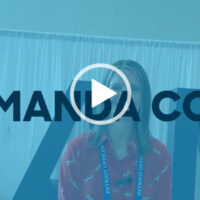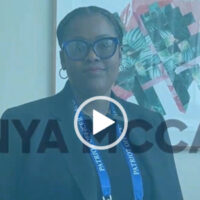
ACAMS Today spoke with Terry Forliti, executive director of Breaking Free, about her human trafficking (HT) story and her work empowering trafficking victims. Breaking Free is a nonprofit organization serving women and girls involved in systems of abuse, exploitation and prostitution/sex trafficking.
Forliti is a survivor of sexual, physical and emotional abuse. Her HT experience inspired her to obtain a degree in organizational leadership in 2005, which she used to empower the marginalized. Prior to becoming executive director, Forliti served on the board of directors. Her ability to relate to HT survivors and her tireless dedication led to her role as a systems analyst at Breaking Free. As a systems analyst, Forliti was instrumental in designing and implementing the Breaking Free database.
Forliti is currently a member of the Minnesota Human Trafficking Task Force and serves on many subcommittees, including the Super Bowl Anti-Trafficking Committee, Minnesota Coalition for Battered Women Anti-Trafficking Committee and the Trafficking in Persons pilot team. As a survivor, Forliti is a seasoned speaker and presenter. In addition, she was awarded the 2015 Lois M. Christensen Women Who Impact Award by the Minnesota Women of Today.
ACAMS Today: Could you tell us about your background and how you became involved with Breaking Free?
Terry Forliti: I grew up in West Bloomington, a suburb of Minneapolis, Minnesota and I was born into a family of privilege. I am the oldest of eight children. For the most part, I had a happy and healthy childhood. Things started to fall apart for me in high school. I had a series of traumatic events happen. It started with my parents’ divorce, which led to my mother’s depression. At that same time, I was working at a local pizza place and when I was 15 my boss, who was 28 years old, raped me. I was taught at a young age the rites of passage, so to speak, of getting married in a church, and that you were not supposed to get pregnant and so forth. Therefore, I knew that I could not tell my family that I had been raped. Right after this experience, one of my friends was killed. It was a series of traumatic experiences from which I could not heal. After this, I remember being in a locker room with a group of children whose parents were professional athletes and they were doing cocaine and I remember thinking to myself, “I am a huge football fan and cocaine is glamorized everywhere I look. Even Eric Clapton is singing about it, so I am going to give it a try.” Thus began my 30-year addiction to cocaine. This is where my seed of inferiority was planted.
So let’s skip 10 years into the future and now I am working for United Healthcare and married. Yes, I am what you would call a functioning cocaine addict. I was married, but had a very dysfunctional and abusive marriage and this marriage produced two children. Eventually the trauma that I suffered during my marriage caught up with me and I started using more cocaine. I lost custody of my children and I sought help. I went to seven or eight dependency treatment centers over the span of one year and then I ended up on the streets. I had no hope.
Within two months, I met the man who would eventually become my pimp and groom me for life as a prostitute by using my drug addiction against me. For the next five years, I lived a life of crime, homelessness and abuse and I was barely able to stay alive.
Eventually, I was arrested (due to all the outstanding warrants I had) and I spent some time in jail. A police officer told me that I looked like I was pregnant and sure enough, I was. I knew I was going to spend some time in jail and I knew there was a chance for this baby, even though I was not equipped to be a mom, but I was also tired of the street life. While I was in jail, I was introduced to the Breaking Free organization. A spokesperson from Breaking Free told us inmates that if you were going to have children, if you were poor, if you were in the prostitution life, then you would qualify for a housing program and it was permanent. I was in all three categories and I thought to myself, my life has changed; my prospects and my attitude have changed. I had to get out of the prostitution life. I lived in their housing for three years and received my Bachelor of Arts degree. A couple of years later after I moved out of their housing, Dr. Vednita Carter, the founder of Breaking Free, asked me to be on the board of directors and I agreed. After this, I joined the Breaking Free family and I have been working with them for 10 years.
One of my favorite quotes is from Martin Luther King, Jr.: “The ultimate measure of a man is not where he stands at the moment of comfort or convenience, but where he stands at times of challenge and controversy.”
AT: How have your experiences helped you in assisting and mentoring other victims of HT?
TF: I knew I had a voice and many of my friends do not. Sexual assault survivors often experience feelings of differentness, isolation and despair because they are unable to share their feelings of trauma with other people. Sexual assault victims have very few avenues where they can share these types of feelings and communicate their experiences openly and this is particularly the case for victims that have been assaulted by their pimps, partners or others. In addition, I can relate to the women who have suffered and I have credibility because I am a survivor. This credibility is specifically one of the reasons why victims come to Breaking Free. It is because this organization is a survivor-led organization. For example, the other day I went to court with my 61-year-old friend to help her out. She is still in the prostitution business. Women do not always “age out” to use a technical term, which means that they do not leave the life of prostitution. In other words, they only age out when their pimp dies or they die. For example, at Breaking Free, our youngest client was 10 years old and our oldest client was 80 years old. This brings me back to street prostitution, because women might age out of let’s say online ads, but they do not age out of street prostitution. We see a good 20 percent of victims from street prostitution at Breaking Free.
AT: What is the biggest challenge you have faced when working with women and young girls who have been trafficked?
TF: One of the challenges are language barriers. We are seeing that quite a few foreign nationals are often denied access to help because of language barriers. Another challenge is mental health diagnosis, such as schizophrenia, autism, bipolar, fetal alcohol syndrome or other pre-existing conditions. We know that people with mental health disorders are especially vulnerable to being victims of HT. Another problem we see are those who suffer from chronic illness who do not want to comply with taking their medication that would help them maintain physical stability. This prevents us from helping the victims because they are unable to give us accurate information when they are not taking their medications to help them be mentally stable. We do refer those victims to the appropriate mental health professionals.
Another challenge is a lack of shelter and housing—both transitional and permanent—for the victims. If the victims do not have shelter, they are not safe.
The last challenge I would say is finding what is called “The Bottom.” The term is a bit of a misnomer because these women are not at the bottom, but rather in the seat of authority. The Bottom is the one placing the Backpage or social media ads, organizing the dates, scheduling your appointments to get your nails and hair done, collecting the payments, etc. She is also the one who wants to be with the pimp and these are the women who are taking all the risks. The pimps are not taking the risks. So, the challenge is deprogramming these women.
AT: How do you work to empower these women and young girls?
TF: Allow them to have a voice. We have a program called a Speaker’s Bureau. The Speaker’s Bureau teaches women how to do outlines of what happened to them. Over the course of 12 weeks, the women review what they have written down and they decide what they want to talk about and what they want to put away forever. The second part is a toastmaster. This part of the program teaches the women how to speak and give a presentation. Their first task is to speak in front of a John school, which is a restorative justice program. If they enjoy speaking, once they graduate, we send them on speaking engagements. Breaking Free receives requests for speakers quite often.
Another way we empower our women is through parenting groups that are culturally specific through the Wilder Foundation. We have chemical dependency groups to assist our women. In addition, we also assist them with higher education, resume writing, anger management, computer skills, transferable skills and much more.
AT: What can we do as financial crimes prevention professionals in our communities to help eradicate this horrific crime against humanity?
TF: I would recommend doing an information day with your communities and sharing your knowledge about the scams that deal with HT within your respective communities.
Another way to help HT victims would be to volunteer at organizations that assist victims and share your knowledge on how victims can rebuild their credit, where can they open a checking account, provide budgeting classes, etc.
AT: This year’s theme for International Women’s Day is #PressforProgress, how do you press for progress?
TF: I take it one day at time. I press on and I never give up. I do not give up on the women I help. I consider myself not only a survivor, but a thriver!










